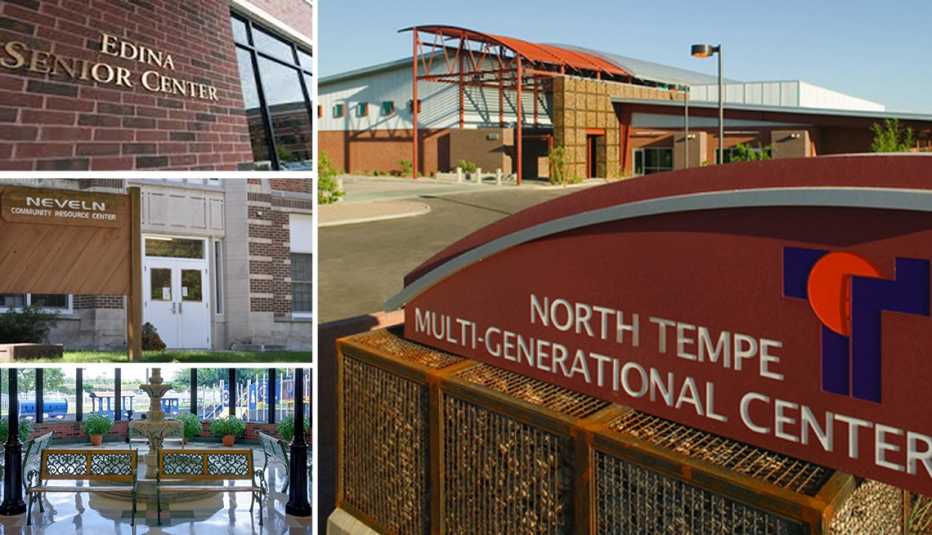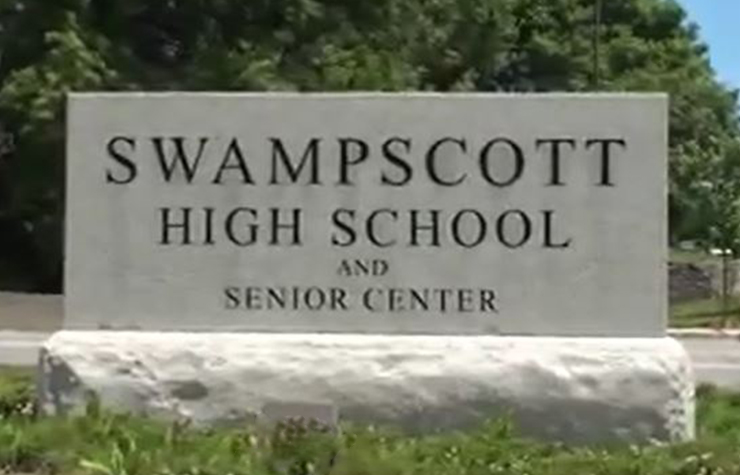AARP Hearing Center


Many nonprofit organizations, municipal offices and social service agencies can't afford to have their own buildings and facilities. One way to solve the problem, while also fostering community, is to share a location. Here, four places and programs that are happy to share.
Neveln Community Resource Center
Ankeny, Iowa | A place for local nonprofits
In 1992, the Ankeny Community School District had to make a decision. Should it tear down a tired but historical 1919 building that no longer housed an elementary school? Or should it substantially renovate the building to meet the diverse needs of the fast-growing city?
Community members, some of whom had attended the former school, "pitched a fit" about the idea of razing the building, says Steve Van Oort, the former mayor of Ankeny.
To determine what the community-at-large wanted for the building, more than 80 people — including business and civic representatives, elected city officials, school employees, not-for-profit agencies and local churches — held a two-day retreat (or charrette). The needs of children, teens, single parents and older adults were considered. A consensus was reached that if the building could be self-sustaining, it would be a great place for housing nonprofits and other community service organizations.
The idea, says Gary Welch, the founding chair of the Neveln Community Resource Center's board, was to recruit nonprofits and charge them rents that were half of the current market rate. The rent money would cover the building's maintenance and operational expenses.


A Shared Solution
By locating a high school and a senior center in the same building, the town of Swampscott, Massachusetts, saved money and served residents of many ages. Read
The Ankeny Community School District provided the building and helped pay for a new roof. City funds, grants, local businesses, and private citizens chipped in to pay for an elevator and replace the heating, air conditioning and windows. A bank waived collateral for a loan that has long since been paid back.
Today, the Neveln Center is indeed self-sustaining — and a thriving community resource. The center has 18 tenants that include a senior center, a clothing and food pantry, a Head Start program, adult day care, a Sudden Infant Death Syndrome (SIDS) bereavement support group, Alcoholics Anonymous, a congregate meal site, an alternative high school, a community action office, a medical clinic for well-baby visits, a Masonic Lodge meeting place, counseling and speech therapy offices. Three churches rent space for services. Lessees receive 12 hours a month of free conference space.
"Neveln centralizes a lot of services and is an incubator for other activities," Van Oort says. "A nonprofit might say, 'I can't help but someone else might — walk down the hall with me.'"
The beauty of the building, says Kevin Koester, an Iowa state legislator and executive director of the Neveln Center, is its mission. "What makes it work so well is that agencies want to be part of a broader collaboration," he says. "It's not just a cheap place for rent, but there's the spirit of serving community."
- Learn more about the Neveln Center
Edina Library and Edina Senior Center
Edina, Minnesota | A great place to spend time
It took a lot of playing musical chairs to build the shared site that is today the Edina Library and Edina Senior Center.
The game started when the Edina City Hall needed to expand its location, find an existing building elsewhere or build something new. The city decided to locate where the Edina Library was. That meant the local government not only had to tear down the library and build a new City Hall on the site, but purchase another property and construct a building to house the new library and a senior center. (The existing senior center had been in borrowed space.) Both groups moved to the new building in 2002.
Hennepin County owns and maintains the library while the city is responsible for the senior center's costs. Shared-spaces expenses are shared.
Having a library upstairs is handy for people who use the senior center. They come to read newspapers, do crossword puzzles, use a computer and take out books. In the beginning, the senior center was used only during the day and only by older adults. Now there are municipal meetings, events and programs (including the AARP Driver Safety course) at night and on weekends. The Edina Arts Center rents a room to hold classes, and space in the center is also rented for birthday parties and weddings.
- Learn more about the Edina Library and the Edina Senior Center
North Tempe Multi-Generational Center
Tempe, Arizona | A community gathering place
This striking, modern building in a low-income area has won design and environmental awards. Opened in 2006, the center houses a Head Start preschool program, the Boys & Girls Club, a fitness center and a library resource center, where people can use computers or borrow books. There's also drop-in pickleball, family bingo night and special events like a fashion seminar.
Something in abundance at the Multi-Generational Center are centers — there's one each for children, teens and seniors. Kids can attend a soccer academy ($15) or learn model rocketry ($12). Parents can take parenting classes. Visual and performing arts classes are also offered. The multi-generational center also hosts AARP CAREversation gatherings for family caregivers as well as the AARP TEK Academy, which provides free technology training workshops on using the smartphones, tablets and computer.
Each of the seven partner organizations at the center gets a 10-year lease for just $1 a year. Program and other fees help the city pay to maintain and run the center, which has three full-time and seven part-time staff.
- Learn more about the North Tempe Multi-Generational Center
Grace Living Centers and the Jenks Public Schools
Jenks, Oklahoma | Young and old spend time together
Don Greiner, CEO of Grace Living Centers (GLC), was scouting property for a long-term care facility when he found two buildings located across from one another.
Greiner bought the two buildings and sold the Jenks Public Schools on a novel idea: He would connect the two buildings by placing a pre-kindergarten and kindergarten classroom between them. The classrooms would be in the center of the nursing home, and there would be ongoing activities between the generations.
The nursing home leases the classrooms to the school district for $1 a year. There's outdoor space for kids to play and residents to engage or watch. Those in long-term care can also observe the action through 20-foot glass walls and windows.
Every morning, GLC residents line up to high-five the kids as they come to school. Students and residents meet in the lunchroom to spend time reading together one-on-one. Each afternoon in shared study, residents and children work together around curriculum goals. For instance, they might count and create patterns together or engage in a science investigation. Twice a week there's dramatic play, which is fun for the youngsters and helpful to residents who may have had a stroke or have early dementia and are working on their own language skills. On Wednesdays, the residents and kids enjoy ice cream from the on-site ice cream parlor.
The first group of children arrived in 1999. Today, there's a long waiting list for the 50-odd pre-kindergarten and kindergarten classes.
Shan Glandon, executive director for teaching and learning for the public schools, advises those thinking of replicating the nursing home/school model to have the nursing home hire a liaison. That person will know the residents' abilities and can be present when the two generations are together. "The liaison is the key that makes it all work," she says.
- Learn more about the Grace Living Centers and the Jenks Public Schools
Sally Abrahms writes about caregiving, baby boomers, housing, retirement and aging-in-place topics.
Page published January 2017





























































